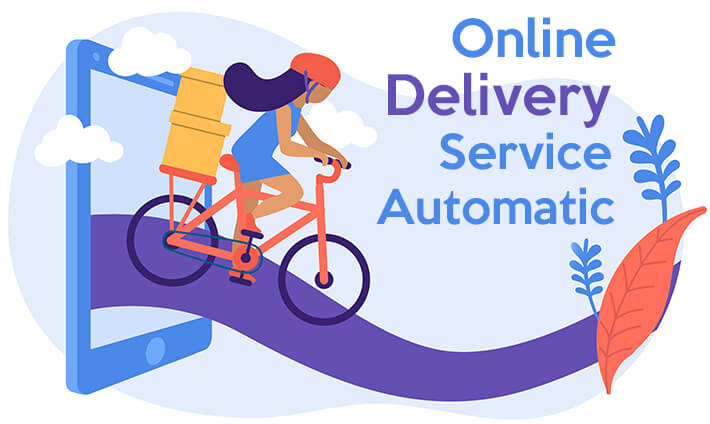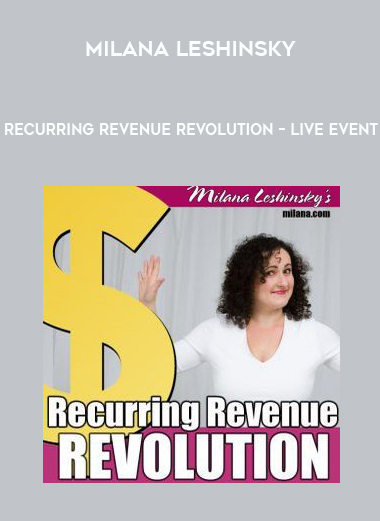
Build Your Freelance Website
Salepage : Build Your Freelance Website
Archive : Build Your Freelance Website Digital Download
Delivery : Digital Download Immediately
A website is an essential tool in every freelancer’s toolbox. Your website is your virtual home.
It’s where you’ll showcase the kind of work you can do, the services you offer, and past client testimonials and case studies. Plus, it will help you build a long-term brand as a freelancer.
Trust us: it will be difficult for you to succeed long-term as a freelancer without a website behind you.
Below you’ll learn the benefits of having a freelance website, how to choose the best website building platform for your needs, and finally how to get started building your website (along with the five must-have pages every freelancer website needs).
5 Benefits of Having Your Own Freelance Website
No matter what industry you’re freelancing in, you need a website. Before any prospective clients decide to work with you, there’s a good chance they’ll check out your website, past testimonials, and current portfolio.
Here are five reasons why every freelancer needs a website:
1. Generate Consistent Leads
If you’re using freelance bidding sites to continuously generate new clients, then you’re doing your freelance business a disservice. By having your own website you can get clients coming to you.
With a professional design, your website can help you make a memorable first impression.
Plus, once you get leads coming to you, you can use your website to help you onboard new clients. For example, on your contact page, you can have a form that has clients answer questions before they get in touch with you. This will allow you to filter out low-quality leads.
If you’re using a platform like WordPress to build your site (we’ll discuss this in detail below) there are all kinds of options to embed a booking calendar, questionnaires, and more into your website.
Plus, when you have your own website you can create a content marketing strategy to generate traffic and leads to you passively. It will take some time, but imagine having new clients come to you consistently, without any prospecting work. Sounds great, right?
2. Create a Professional Image
By having a professional website, you’re in complete control over how you present yourself as a freelancer. With a high-quality website, your business will be taken more seriously and it will be easier for you to generate clients and charge higher prices.
Think about it this way: when you come across a low-quality website, what type of feelings does it invoke? It definitely doesn’t inspire confidence.
Luckily, there are a variety of tools at your disposal, including the WordPress CMS and website builders, which can make it easy to build a stunning website.
3. Stand Out in a Crowded Marketplace
Like any other business, there’s a lot of competition, no matter what niche you’re in. Your website gives you a great way to stand out from every other freelancer out there.
For example, you can choose to highlight your personality, your past successes, namedrop any big clients you’ve worked for, and more.
With your own website, you can more easily communicate your USP. This helps you stand out in a crowded field and more easily attract clients that are right for you.
4. Show Off Your Freelance Portfolio
Your portfolio can speak for you as a freelancer. Without a solid portfolio, potential clients only have your word to rely on. Even though you may be great at what you do there’s no way to prove it.
Instead, you can use your website to create a compelling portfolio that has clients begging to work with you.
Once you have a handful of projects under your belt, it’s time to build a quality portfolio that highlights these successes.
A freelancer website can do just that.
5. Build a Tangible Freelance Business
If you’re relying on third-party bidding sites to generate clients or relying on word-of-mouth, it will be challenging to build a consistent business.
But with your own freelance website, you can use content marketing and other marketing approaches to consistently generate leads to your site.
When potential clients are coming to you this not only gives you more power with negotiation, it also allows you to create consistency and predictability with your business.
Should You Use WordPress or a Website Builder to Build Your Freelance Website?
When it comes to building your site there are all kinds of routes you can take. Two of the most popular, which are well suited for beginners, include using the WordPress CMS or a website builder.
Website builders were created with beginners in mind. The goal is to help you build a professional-looking website without having to touch a line of code.
The process is simple, just select a template that’s in alignment with your niche, customize the template via the drag and drop builder, add your content and images, and you’re all set.
Once you install WordPress on your server, you can choose the perfect theme, then start customizing. The theme you choose will form the foundation for your website’s appearance and its general functionality.
Put simply, website builders have a much lower learning curve, but the site you build won’t be as easy to customize and scale. WordPress will require a bigger time investment upfront but gives you greater flexibility moving forward.
5 Pages Every Freelance Site Needs to Have
You’re welcome to get as creative as you want with your freelancer website. However, there are a handful of pages that will be hard to succeed without.
Here are five pages every freelance website needs to have:
1. About Page
A lot of creatives will just use their about page to list their accomplishments. Although this might help to convince some people, it’s not the best use of this page.
Instead, your about page should focus on the relationship between you and a potential client working together.
Spell out exactly what you do and why you’re best for the job. Make your about page stand out by speaking to your client’s deep needs and aligning this with your skillset and past achievements.
2. Services Page
Your services page dives even deeper into your skills and what you’re selling.
What do you do? What’s your process like? And who do you typically work for?
Your service page should also be written similarly to your about page. Even though the focus is on exactly what “you” provide, you’ll still want to show your clients what’s in it for them.
Another thing worth mentioning: usually the fewer services you offer, the better. Think about what you enjoy doing and what you’ve received the most praise for.
You can even consider offering different service-level tiers or packaging up your services into different packages.
Finally, you’ll need a solid CTA, this can direct people to book a discovery call with you, sending an email, or even purchasing your services directly.
3. Portfolio Page
With your portfolio page, your work should speak for you. Your about and services pages will spell out exactly the kind of work you do, while this page will show them the end result.
The layout of this page will differ, depending on the kind of work you do. For example, if you’re a graphic designer, then this page can include screenshots of websites you’ve designed, or just showcase clips of your work.
If you’re a freelance writer, then this page might be as simple as the headlines of your articles with links, so people can read your work live on the web.
4. Testimonials Page
If you have a roster of past clients, then you should try to source testimonials you can display on your website. A handful of really solid testimonials can do a lot of the selling for you.
You can also just display logos of past companies you’ve worked with. This is a subtle design element that can go a long way towards convincing a prospect to take a chance of working with you.
5. Contact Page
Finally, you’ll need a way for new clients to get in touch with you. You’ll want to make it as easy as possible for new people to reach out. So, make sure that you offer multiple forms of contact on your contact page.
Typically, you’ll have a contact form that has the required fields. But, you’ll also want to list your physical email address and even phone number. You don’t want to lose out on a prospective client, because they were on the go and wanted to call, instead of email.
Another cool thing you can do with a freelance website is add an in-depth form to your contact page. So, instead of the standard name, email, and message, you could include fields that are specific to the kind of work you’re going to be doing for them.
This can help to speed up the onboarding process and ensure you’re weeding out low-quality prospects from the get-go.
How to Build Your Freelance Website With a Website Builder
By now you should have a better understanding of why you need a website as a freelancer, the kinds of pages you’ll want to create and which tool you want to use to build out your website.
Here’s how you can get started building out your freelance website with a website builder. For the tutorial below we’re using the Gator Website Builder.
1. Fire up the HostGator Builder
The first thing we’ll need to do is fire up the Gator Website Builder. To do this navigate to your HostGator control panel and locate the ‘Website Builder’ icon.
2. Select Your Freelance Website Theme
As soon as you open up the Gator Website Builder you’ll be presented with a variety of different templates to choose from.
You can sort by category, or search for your respective niche. Here are some of the potential templates you’ll find in the portfolio category.
Once you find a theme you like hover over it and click ‘Select’.
3. Customize Your Website Template
Once you select your template you’ll be able to start customizing via the drag and drop builder. Once you hover over any existing website element you’ll be able to customize it.
Any element that you click on will give you additional customization options.
The left-hand menu allows you to add new site elements, create pages, and more.
4. Add Additional Pages
You’ll probably be spending the majority of your time customizing the appearance of your website. But, you’ll also want to create the necessary pages for your freelance site.
To add more pages click on the ‘Pages’ option, and here you’ll be able to manage existing pages that were created by the theme and even add new ones, like a services page, testimonial page, and more.
How to Build Your Freelance Website With WordPress
Or, maybe you want more flexibility and customization options and prefer to use WordPress to build out your freelance website.
If that’s the case, this section is for you.
1. Install WordPress on Your Site
To get started with WordPress you’ll need to install it on your site. If you don’t already have WordPress installed, then open up your control panel and install WordPress by clicking on ‘WordPress Installer’.
On the next screen, you’ll need to select the domain you want to install WordPress on, enter your relevant site details, and the installer will do the rest of the work.
2. Choose Your Freelance WordPress Theme
One of the biggest decisions you’ll have to make is choosing the theme for your freelance website. With WordPress, there are thousands of different themes to choose from, both free and premium.
You can choose from some of the most popular WordPress themes on the market, some of the top themes for freelancers, or even something more specific like WordPress themes for graphic designers.
You’ll want to spend some time researching the best theme for your needs before you choose one to install.
Luckily, once you’ve found the perfect theme it’s easy to install and start customizing.
To install a new WordPress theme you’ll need to navigate to your WordPress dashboard. This will be through a link that will look something like “yoursite.com/wp-admin”.
Once you’ve logged into the backend of your site you can install a new theme by navigating to Appearance>Themes, then select ‘Add New’.
On the next screen, you can either upload a theme (if you’ve already downloaded or purchased a theme), or you can search for a theme directly within your dashboard.
Once you find a theme you like just hover over it and click ‘Install’, then ‘Activate’.
3. Customize Your Site and Add Pages
Once your WordPress theme is activated, you’ll get access to a theme customization panel, along with a theme options panel.
Both of these allow you to make customizations to your theme. The theme options you have access too will depend upon the theme you choose. But you can always make visual customizations by navigating to Appearance>Customize.
On this screen, you’ll be able to change your logo, color scheme, typography, widget areas, and more.
To add new pages to your site, just navigate to Pages>Add New. You can quickly add new pages to your site here.
4. Install WordPress Plugins for Additional Features
One of the most powerful aspects of WordPress is the plugin library. Virtually any kind of feature you want to add to your site, you can do so with a plugin.
WordPress plugins are a lot like themes in that there are thousands of different options to choose from. But, no matter what features you’re looking for, you’ll be able to find the perfect plugin for your needs.
You can always choose from some of the most popular WordPress plugins out there, or you can search for a more unique plugin–depending on the features you require. Check out our list of the best WordPress plugins for freelancers.
Closing Thoughts
Hopefully, by now you’re well equipped to build an awesome new website for your freelance business.
You understand the benefits of why you need your own freelance website, as well as some of the most important pages you’ll want to create.
Whether you decided to go with WordPress or use a website builder is a matter of personal preference, existing skill set, and the ultimate goal you have with your site.
Get started building your freelance website today with HostGator!
More from Categories : Internet Marketing














Reviews
There are no reviews yet.